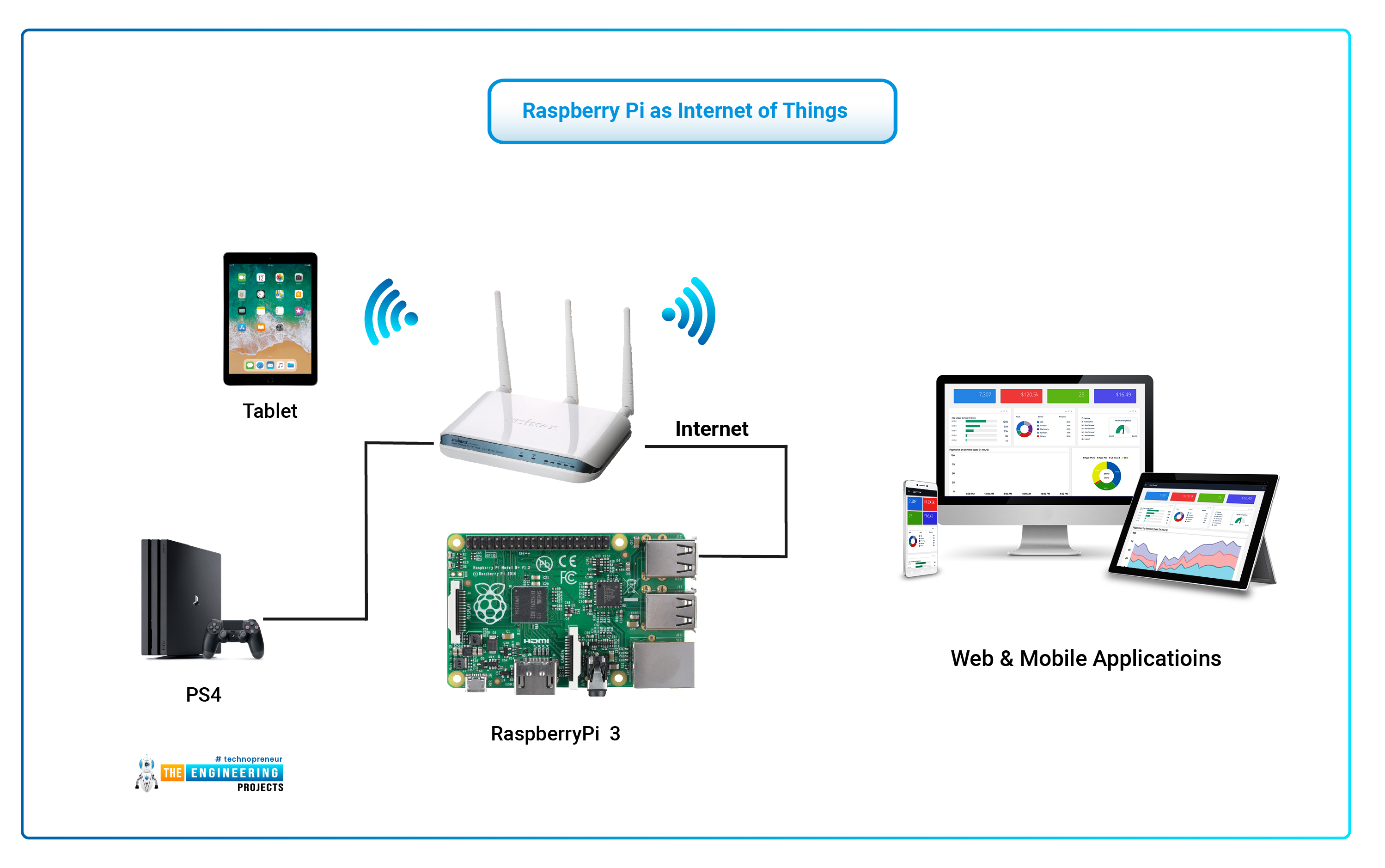Mastering Secure Remote Management: Unlocking IoT Device Potential With SSH
Imagine being tied to your desk, yearning to adjust a setting on your Raspberry Pi located miles away. The need to remotely manage IoT devices has transitioned from a luxury to a necessity in today's hyper-connected world. Remote management serves as a lifeline, enabling software updates, setting adjustments, and diagnostic evaluations without the constraints of physical proximity. This capability is particularly crucial for IoT deployments where devices are dispersed across vast geographical areas. As IoT technology expands, the demand for secure and efficient remote management systems has reached unprecedented levels, empowering tech enthusiasts, developers, and business owners alike to harness secure connectivity through free IoT platforms offering SSH remote IoT device functionality.
Remote management is not just about convenience; it’s about efficiency and security. The ability to manage IoT devices remotely allows for seamless operations, reducing downtime and enhancing productivity. This is especially vital for businesses that rely on IoT technology for critical functions, such as monitoring environmental conditions in agriculture or controlling smart home devices for enhanced living experiences. However, with the rise of IoT technology, the importance of security cannot be overstated. When devices are remotely accessible, they become potential targets for malicious actors. This requires a deep understanding of security protocols and best practices to mitigate potential risks.
| Aspect | Details |
|---|---|
| Concept | Securely accessing and controlling IoT devices remotely using SSH (Secure Shell). |
| Benefits | Remote troubleshooting, software updates, configuration changes, improved security, reduced operational costs. |
| Implementation | Enabling SSH on the IoT device, configuring firewalls, using SSH clients (e.g., PuTTY), setting up key-based authentication. |
| Security | Employing strong passwords, using SSH keys, regularly updating software, monitoring SSH logs, implementing intrusion detection systems. |
| Free Tools | PuTTY, OpenSSH, KiTTY, MobaXterm. |
| Device Examples | Raspberry Pi, embedded Linux systems, routers, network appliances. |
| Resource Link | Raspberry Pi SSH Documentation |
SSH (Secure Shell) emerges as a critical tool, providing an encrypted tunnel for all data transmissions. This safeguards sensitive information from unauthorized access, ensuring that commands and data exchanged between the remote device and the user remain confidential. Using SSH to connect to your IoT device, whether with a system user or SSH key-based secure authentication alongside standard client tools like PuTTY, is crucial. The advantage of SSH lies in its ability to bypass vulnerabilities often found in other private client tools and protocols.
- Decoding Macy Jones Story Social Justice Interests Discover Now
- Find Movies Like The Ballad Of Buster Scruggs Start Here
Remote IoT VPC SSH not only enhances operational efficiency but also ensures secure communication between devices. Managing remote devices efficiently is a critical need in today’s interconnected world, and the remote IoT platform offers a robust solution for users working with Raspberry Pi devices. This approach ensures data integrity and confidentiality, minimizing the risk of eavesdropping or data tampering. For Raspberry Pi enthusiasts, securely accessing your IoT device with remote SSH is paramount. With free tools readily available on Windows, you can establish a powerful and flexible system tailored to your specific needs.
If you encounter issues with SSH access, verifying that SSH is enabled, confirming the correct username and password, and ensuring proper port forwarding configuration are essential troubleshooting steps. RemoteIoT platform SSH offers a robust solution for managing remote IoT devices and servers securely. As IoT technology continues to expand, the need for secure and efficient remote management systems becomes increasingly critical.
Whether you're a tech enthusiast, a developer, or a business owner, grasping the power of free IoT platforms with SSH remote IoT device functionality is essential for secure connectivity. With SSH (Secure Shell), you can securely control and manage your Raspberry Pi from anywhere in the world, making it a cornerstone technology for IoT enthusiasts. A comprehensive guide will walk you through everything you need to know about setting up SSH for your IoT devices, including how to download and configure the necessary tools for free.
Key-based authentication is a more secure alternative to password-based authentication. It involves generating a pair of cryptographic keys—a private key and a public key. The public key is placed on the remote server, while the private key remains on your local machine. When you connect to the server using SSH, the client uses the private key to prove its identity, eliminating the need to enter a password. To enable key-based authentication, you first need to generate an SSH key pair. This can be done using tools like `ssh-keygen` on Linux or macOS, or PuTTYgen on Windows.
Port forwarding, also known as SSH tunneling, allows you to forward network traffic from your local machine to a remote server, or vice versa. This can be useful for accessing services that are only accessible from within the remote network, or for securing network traffic by encrypting it through an SSH tunnel. There are two main types of port forwarding: local port forwarding and remote port forwarding. Local port forwarding allows you to forward traffic from your local machine to a remote server. For example, you can use local port forwarding to access a web server running on the remote server by forwarding port 80 on your local machine to port 80 on the remote server. Remote port forwarding allows you to forward traffic from the remote server to your local machine. This can be useful for allowing someone to access a service running on your local machine from a remote network.
The use of VPNs in conjunction with SSH can offer an additional layer of security for remote management of IoT devices. A VPN creates an encrypted tunnel between your device and the remote network, masking your IP address and protecting your data from eavesdropping. Setting up a VPN can be slightly more complex than setting up SSH alone, but the added security benefits are well worth the effort.
Regularly updating your SSH client and server software is crucial for maintaining security. Security vulnerabilities are often discovered in software, and updates typically include patches to fix these vulnerabilities. By keeping your software up to date, you can protect your devices from known exploits. Monitoring SSH logs can help you detect and respond to suspicious activity. SSH logs record information about SSH connections, including the date and time of the connection, the IP address of the client, and the username used to authenticate. By regularly reviewing these logs, you can identify potential security threats, such as brute-force attacks or unauthorized access attempts.
Implementing intrusion detection systems (IDS) can provide an additional layer of security for your IoT devices. An IDS monitors network traffic and system activity for suspicious patterns, and alerts you when it detects a potential intrusion. There are many open-source and commercial IDS solutions available. Enabling firewalls on your IoT devices is essential for controlling network access and preventing unauthorized connections. A firewall acts as a barrier between your device and the outside world, blocking any traffic that does not meet its predefined rules.
Limiting the number of allowed SSH connections can help prevent brute-force attacks. A brute-force attack is an attempt to guess the password for an account by trying many different passwords in rapid succession. By limiting the number of allowed SSH connections, you can make it more difficult for an attacker to successfully brute-force a password. Disabling password-based authentication and relying solely on SSH keys can significantly improve security. Password-based authentication is vulnerable to brute-force attacks and other password-related security threats. By disabling password-based authentication and requiring users to authenticate using SSH keys, you can eliminate these risks.
Using strong passwords for SSH keys is crucial for protecting your private keys from being compromised. A strong password should be at least 12 characters long and should contain a mix of uppercase and lowercase letters, numbers, and symbols. Avoid using easily guessable passwords, such as your name, birthday, or pet's name. Storing SSH keys securely is essential for preventing unauthorized access to your IoT devices. If your private key is compromised, an attacker can use it to access your devices without your knowledge or permission.
Regularly backing up your SSH keys is crucial for ensuring that you can recover your access to your IoT devices in the event of a disaster. If your private key is lost or damaged, you will not be able to access your devices unless you have a backup. It's important to store your backups in a secure location that is separate from your primary key storage location. You should also test your backups regularly to ensure that they are working properly.
Staying informed about the latest SSH security vulnerabilities is essential for protecting your IoT devices from attack. New security vulnerabilities are constantly being discovered in SSH software, and it's important to be aware of these vulnerabilities so that you can take steps to mitigate them. There are several resources that you can use to stay informed about SSH security vulnerabilities, such as the National Vulnerability Database (NVD) and the SANS Institute. You can also subscribe to security mailing lists or follow security experts on social media.
By following these tips and best practices, you can significantly improve the security of your SSH connections and protect your IoT devices from attack. Security should always be a top priority when managing remote devices, and taking these precautions can help you minimize the risk of unauthorized access and data breaches. This layered approach to security, combining strong authentication, encryption, and vigilant monitoring, provides the best defense against potential threats.
The integration of SSH with IoT platforms further enhances the capabilities of remote device management. These platforms provide a centralized interface for managing multiple devices, simplifying tasks such as software updates, configuration changes, and monitoring. By combining the security of SSH with the convenience of an IoT platform, users can achieve a robust and efficient remote management solution. In conclusion, SSH remote IoT device functionality is a critical component of modern IoT deployments. By understanding the principles of SSH security and leveraging the available tools and resources, users can securely manage their remote devices and ensure the integrity of their data.



Detail Author:
- Name : Eulah Witting
- Username : maiya76
- Email : freichert@hotmail.com
- Birthdate : 2002-01-15
- Address : 809 Judd Fork Apt. 139 East Abdullah, NC 72289
- Phone : 1-248-503-9000
- Company : Runolfsson Ltd
- Job : Tractor Operator
- Bio : Aperiam et ullam quia unde. Non eveniet libero dolores nulla. Enim laborum dolorem aut et sunt quis laborum non.
Socials
instagram:
- url : https://instagram.com/mhartmann
- username : mhartmann
- bio : Sed aut culpa quo accusantium aut. Ex ab quaerat perferendis ex dolores et.
- followers : 4424
- following : 1906
twitter:
- url : https://twitter.com/mhartmann
- username : mhartmann
- bio : Qui sapiente exercitationem itaque officia voluptatem dolore. Harum consequatur sint est excepturi. Cupiditate enim quidem quibusdam.
- followers : 6073
- following : 453
facebook:
- url : https://facebook.com/marjory_xx
- username : marjory_xx
- bio : Rerum consequatur ad quia omnis adipisci repellendus non.
- followers : 4000
- following : 111
linkedin:
- url : https://linkedin.com/in/mhartmann
- username : mhartmann
- bio : Sunt voluptatem exercitationem repellat quam.
- followers : 5040
- following : 2492